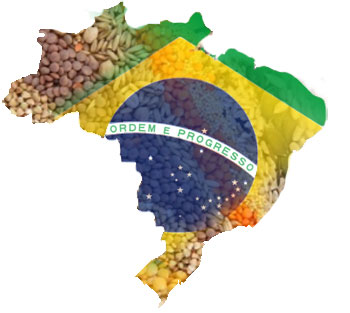Agribusiness represents 20% of the Brazilian GDP. One of the factors contributing to the continuing strength of Brazil in the growing global grain market is the rapid adoption of high value seeds. With Brazilian grain production narrowly focused on maize and soybeans, virtually every seed gets treated, often more than once before it is planted. Kline estimates that nearly 45 million hectares planted received a seed treatment in 2013. Of course, with multiple treatments and crops added, such as rice and cotton, as many as 81 million hectare treatments were made to seeds in 2013.
The total seed treatment market is over USD 600 million in 2013. In terms of seed treatment fungicides, the main fungicide on a hectare treated basis is Maxim XL.
| Table 6B-7: Seed Treatment Fungicides in Brazil by Brand and Crop, 2013 | ||||
| Brand name | Corn | Cotton | Rice | Soybeans |
| Apron Max-RFC | – | – | – | X |
| Atento | – | – | – | X |
| Baytan 150FS | – | X | – | – |
| Captan | X | – | – | – |
| Derosal Plus | – | X | X | X |
| Dynasty | – | X | – | – |
| Generic Carbendazim | – | X | X | X |
| Maxim XL | X | – | – | X |
| Monceren 250 SC | – | X | – | – |
| Protreat 500 SC | – | – | – | X |
| Spectro | – | – | – | X |
| Thiram 480 ST | – | – | – | X |
| Vitavax-Thiram | X | X | X | X |
| X=Used to treat crop. | ||||
The leading insecticide seed treatment products in Brazil in terms of hectares treated are Cropstar and Standak Top.
| Seed Treatment Insecticides or Insecticide/Fungicide Combinations in Brazil by Brand and Crop, 2013 |
||||
| Brand | Corn | Cotton | Rice | Soybeans |
| Avicta 500FS | X | X | – | X |
| Cropstar | X | – | – | X |
| Cruiser 350 FS | X | X | – | X |
| Fenix | – | – | – | X |
| Furadan 350 FS | X | X | – | – |
| Furazin 310 SC | X | – | X | – |
| Generic Imidacloprid | X | – | – | X |
| Pirâmide | – | X | – | – |
| Poncho | X | X | – | – |
| Saddler 350 SC | X | – | X | X |
| Saluzi 600 FS | X | – | X | X |
| Standak | X | X | X | – |
| Standak Top | – | – | – | X |
BASF, Bayer, and Syngenta are the three leading suppliers in Brazil for the seed treatment market. FMC, Chemtura, Rotam, Arysta, Inharabras, and Mileniacluded are also among the major suppliers of seed treatment products.
Kline’s chapter on Brazil of the global seed treatment market research is a detailed analysis of the Brazilian seed treatment market in 2013 covering the following topics:
- Crop background and planted acres
- Crop end use by acres or volume
- Production and crop protection methods
- Key seed suppliers and their product capability with treatment
- Role of seed treatment as crop protection method
- Key diseases, insects, nematodes, and other reasons seeds are treated; regional differences within countries when appropriate
- Chemical treatment methods for target diseases and insects and non-chemical alternatives
- Product sales and market share for seed treatment products
- Active ingredient use for seed treatment products
- Sales by company for seed treatment products
- Seed treatment outlook and assumptions by crop background

